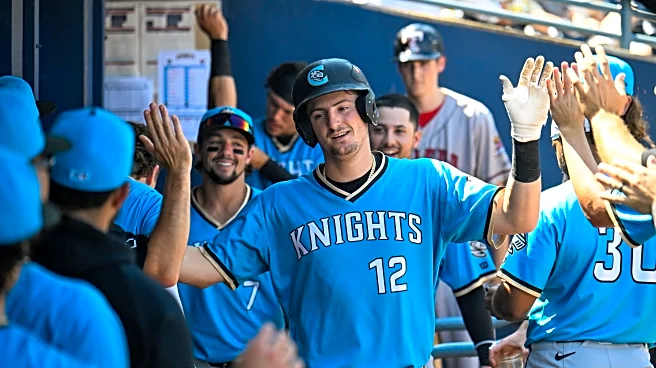The Charlotte Knights couldn’t meet even the most modest expectations, finishing with a 65-85 record and fourth-worst in the International League South. Entering the season with high hopes under 2024 Southern League-winning manager Sergio Santos, Charlotte fell flat on its face when it came time to test the roster’s depth. After Edgar Quero, Chase Meidroth, Kyle Teel, and Colson Montgomery (the Big Four) got called up, the Knights couldn’t replace their bats in the lineup. Meanwhile, Charlotte’s
starters were extremely inconsistent, and the bullpen was often nowhere to be found.
Overall, few players shined while many struggled, casting little hope for next year’s potential.
Tim Elko proved that he still has big league-bat potential. He maintained a .292/.357/.552 slash line with 70 RBIs and 26 home runs, showing a strong improvement from last year. Elko was also named Charlotte’s March/April player of the month, after he got off to a sizzling start that resulted in a crazy .367/.448/.711 slash line, nine home runs and 20 RBIs. Despite his later struggles in Chicago, Elko was one of the most electric players to watch at the start of the season.
Corey Julks and Dominic Fletcher continued to show that they’re AAAA players. Their respective .300 and .260 batting averages, 58 and 68 RBIs, and 77 and 56 runs show that they’ve slightly outgrown Truist Field. Although streaky at times, Julks and Fletcher each provided plenty of offense to power the lineup, especially in the second half of the season. Julks showed a bit more utility this year with 18 stolen bases and a .851 OPS, but there were few chances for him to put his skills to the test beyond Charlotte.
Beyond Elko, Julks, and Fletcher and Brooks Baldwin, who kept bouncing between Charlotte and Chicago (poor guy), there were few dependable hitters.
On the mound, the starters and relievers were hardly threatening. The rotation fell apart fast, as Justin Dunn and Nick Nastrini were DFA’d by July, and Chris Rodriguez’s season ended in July due to injury. That left Jairo Iriarte, Owen White, and [redacted]. Iriarte had a terrible follow-up to his brilliant 2024 campaign in Double-A and Chicago, earning a 7.24 ERA and allowing 43 runs in 35 Triple-A games this year. White and [readacted] each put up similar performances, holding roughly a 4.40 ERA and 1.38 WHIP through about 20 starts. Both showed major consistency issues, too, with White walking 4.78 in nine innings and [redacted] 3.22.
Charlotte’s best arms were, surprisingly, Yoendrys Gómez and Dan Altavilla. They were the only pitchers on the roster that held a sub-2.45 ERA, combining for 20 runs and five home runs given up. Sadly, their time with the Knights was short-lived, as both were signed in-season and spent significant time in Chicago.
Unfortunately, the bullpen is far less sunny than the rotation, recording a 5.25 ERA, 452 runs, and 32 blown saves, with their ERA and runs allowed ranking them among the five-worst in the International League. There’s no single throat to choke here, as every reliever left much to be desired. Chase Plymell and Peyton Pallette get a slight pass, though, as they spent the first two months of the minor league season with the Barons and were finding their footing for a bit. While Truist Field is one of the least pitcher-friendly ballparks, Charlotte’s bullpen needs a makeover next year.
Things may turn around once some of the Barons reach the next development phase, but unless things dramatically change the Knights are not a viable feeder team to the Sox.
















